SAP S/4HANA Logistics – Top 10 Myths
Category: SAP S/4HANA Logistics Posted:Jun 29, 2018 By: Robert
About myths and misconceptions to be alert is to be forearmed! If you are a client or a vendor then misconceptions in implementing a product may be a huge obstacle for a smooth transition into another platform or product. If you do not address and clarify a myth/misconception then it may lead to the improper utilization of resources and skills. Given below are a few misconceptions and myths surrounding SAP S/4HANA.
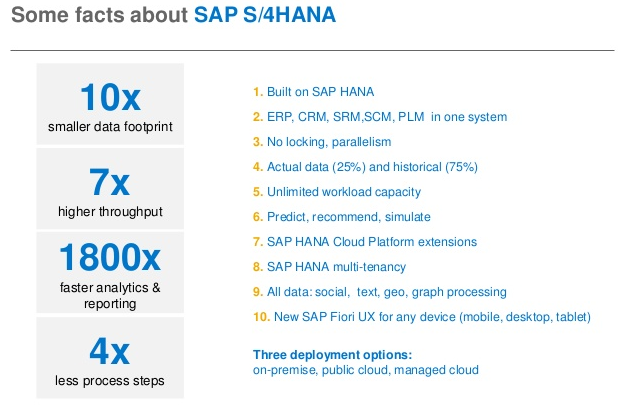
1. Business Suite on HANA and S/4HANA are the identical thing
The statement given above is true in January 2014 because it was at this time that SAP duplicated code lines from the Business Suite and generated a new line of code for S/4HANA.
But after the creation of S/4HANA the SAP development team started to work on brand new application features for S/4HANA and different code lines started to appear. Market experts analyze that developers are working for both products and said that S/4HANA has a greater number of developers working towards code creation. The developers currently working on SAP S/4HANA have the liberty to utilize the comprehensive set of features offered by the SAP HANA platform such as IoT, geo, predictive etcetera. This means that the developers will not have to record support for various database platforms leading to the accelerated pace of innovation on a platform that is much richer. Some features from S/4HANA may make it to the Business Suite. But the features will be multifunctional and exclusively available through the SAP HANA platform.
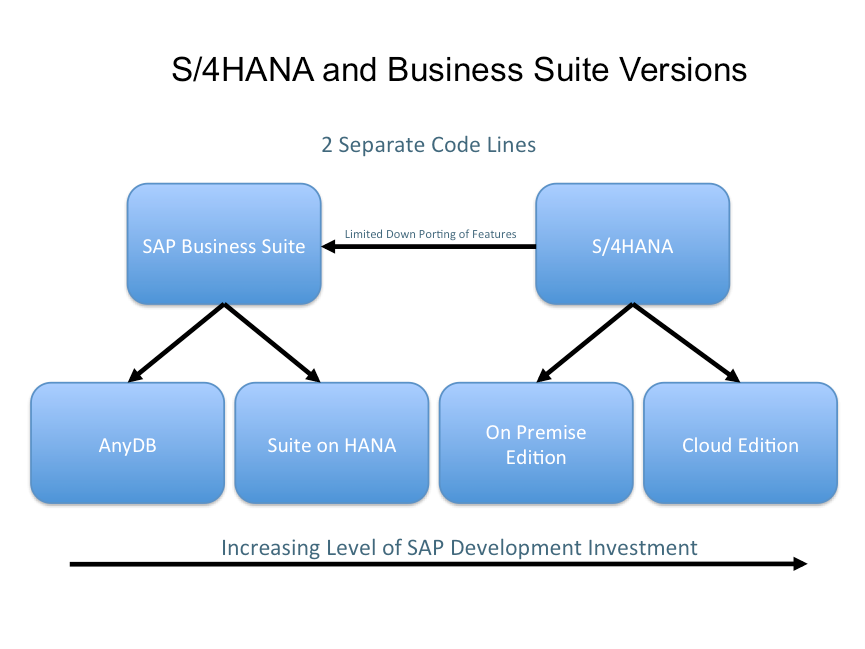
Check out the Article- A Completes Guide of SAP Simple Logistics
2. S/4HANA isn’t Well-suited to Industry Solution
S/4HANA is released officially for every industry solution, but most of the features within all the industry solutions are not supported in the existing release. To verify if your enterprise can utilize S/4HANA with the existing implementation, it is required that you should rule out the features that are unsupported, and then you can contrast this with the usage of the product. When you need a specific solution and such functionality holds back the Enterprise it is recommended to enlist with the help of SAP. Then you can decide the features that are most in-demand or bring features to market through the process of co-innovation. SAP has a code Inspector tool that will help with this process.
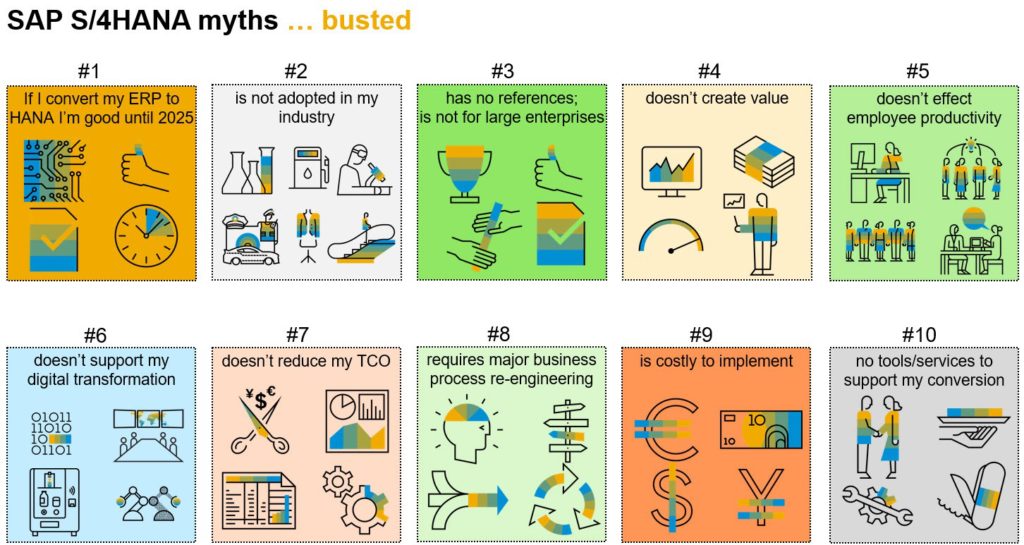
3. S/4HANA is only available in the Cloud
S/4HANA is available both on-premise and in the Cloud. And the code lines for these two versions are indistinguishable. The on-premise version can be run on-premise as the name indicates in the company’s data center. The on-premise version can even be run in the SAP HANA Enterprise Cloud or using a hosting partner. But the Cloud edition can only be run in this app data center that can be managed by SAP SaaS.
While both on-premise and Cloud versions have the same code line, the on-premise edition provides complete access to all the features as well as the features to extend the application. On the other hand, the Cloud edition enables access in a more targeted manner with a limited number of features. This means that it will be easier to implement and manage the Cloud version. As an enterprise, you can select the edition that best matches your particular use case scenario.
4. The Modification will not work in S/4HANA
If your changes have been executed within SAP standards then they should work in the on-premise version. But SAP is inspiring its consumers to migrate to S/4HANA. This is because it will offer consumers a better perspective on modifications done and if they can take on standard features. Conventional modifications are not supported through the public Cloud edition. This means that extensions will have to be constructed using the Cloud platform provided by HANA. SAP recommends the HANA Cloud platform to replace modifications performed in the on-premise version.
5. All the new features will be obtained in EhP8
There will be new features in the Business Suite brought in from the Enhancement Package 8 (EhP8). This package will include a considerable quantity of innovation relying on customer feedback. The new features will be those that are from the new code line with the ability to be down ported to any DB. The resources have to be accessible to perform the down port. It is important to note that the S/4HANA team has put a lot of effort into simplifying the Data Model and taking advantage of the SAP HANA platform.
6. All the features of Business Suite are not supported by S/4HANA
SAP S/4HANA is a relatively new product compared to the Business Suite, you cannot expect every feature to be substituted on a 1:1 basis. In particular situations, the above-mentioned features will be brought out in future releases. In other instances, SAP is reviewing the need for such specific features.
7. You cannot Upgrade to S/4HANA
Enterprises can promote from the Business Suite to S/4HANA for the on-premises version. Thus, for the Cloud edition, the enterprise requires migrating to the new solution. To decide on the best part of the action you would need to evaluate various factors, and the major one is the quality of the Donor SAP system. In case the Enterprise data quality or structures is not good, or its business support is bad, the enterprise can utilize S/4HANA as a chance to re-platform and optimize. If the enterprise system is fit for purpose, then the upgrade is the optimal solution.
8. Simple Logistics will not be available until 2016
Simple Logistics was known to have been shipped in Q4 of 2015 and bring popularization to several sections of the standard ERP platform. Simple Logistics will extend with the development of S/4HANA and will continue to be a progressive effort. The Business Suite for SAP was also always a work in progress (without loose ends of course). Meaning there were continual updates, enhancements, and new capabilities, and extended features. Therefore, the important takeaway here is that SAP S/4HANA will never be “complete.” You as an enterprise should just assess the market situation and jump in at the right time to walk away with the features that you were looking for in the first place.
9. Once we upgrade to Oracle 12c we will have SAP in-memory –and thus it is not required to have S/4HANA
If you are running SAP Business Suite using Oracle in-memory version you will receive the old code line which is running on an in-memory database. But you will not get the new features restricted to HANA only which will come to S/4HANA. Great examples of this are Fiori apps which need S/4HANA or HANA and associated processes such as ERP.
10. No one else is adopting S/4HANA
The interest and demand for S/4HANA are impressive, to say the least, as the market has been prepared for something simple, refreshed, and new. There are several major corporations across the world promoting S/4HANA through dependence on the tool for project execution.
Checkout the Article- An Introduction to SAP S/4HANA Logistics
Let us observe a few myths and misconceptions that enterprises should avoid the Fiori for S/4HANA.
1. You can use SAP S/4HANA without SAP Fiori – true
This is one of those rare occasions wherein a myth is true. This statement is technically true if you are fine with restricting the business value obtained from SAP S/4HANA.
People following SAP products closely will know the hype around SAP Fiori and all the advantages it brings. Fiori is used as a vehicle for delivering business innovations of SAP S/4HANA. These include digital transformation benefits such as the “new insight to action paradigm,” enhanced business processes which are more efficient and simpler, and brand-new user experiences.
Without SAP Fiori customers can benefit from accelerated analytics and the enormous power of the HANA database but through the use of SAP Fiori, you can do a lot more.
2. Fiori Visual Theme converts classic SAP GUI transactions and Web Dynpro ABAP applications into SAP Fiori apps – False.
The Fiori visual theme only eliminates poor navigation between classic apps and Fiori apps. But the visual theme is just a cosmetic enhancement for Classic apps changing the look of the app while not making any changes to the functionality of the underlying SAP GUI transaction. There may be a thousand Fiori apps, but most of the businesses still utilize the Classic apps regularly. One has to remember that classic apps cannot be guaranteed on mobile devices and there are some implications about behavior for certain features.
3. Everything will run on mobile devices without any extra thought or effort – False.
It is accurate to say that Fiori Launchpad and Fiori application will respond well to mobile devices and will adapt to the relevant form factor automatically.
Even though Fiori applications are responsive to mobile applications, just adjusting the form factor will not do. Various technical, functional, and strategic considerations will influence how your enterprise users will cooperate with mobile devices.
4. All SAP Fiori and SAP S/4HANA UX are active out of the box – False.
All SAP HANA and Fiori User experiences are installed as along with the SAP S/4HANA solution. But there are certain configuration and activation tasks that require to be completed. There are well over 1000 Fiori apps accessible to S/4HANA users in over 140 business roles. With a massive number of such apps, it is best to know which apps to activate first, to serve your business with.
The activation will depend upon the enterprise and its journey of digital transformation and the Change management required throughout the journey. This will help to decide which apps the enterprise will require to activate, configure and test. The activation of the apps and the activation of the ones which are not required are essential to ensure a good amount of control over the apps. Deactivation will also depend on the system environment and associated choices.
5. All you need to do is to select the Apps – the user can organize their homepage according to their choice
A key driver for digital transformation is high user adoption. Therefore, even though it is an option for the company to not organize the user homepage, user adoption may be affected.
Since an enterprise is dependent on its users, it cannot leave its users to waste time trying to adjust their home page. Users will want to customize their Homepage over time. But initially, the enterprise will have to set up the user Homepage.
6. HANA means never having to do Performance Tuning ever again – False
Even if your enterprise has a powerful backend database when you are executing over a thin client web browser Network and bandwidth are mission-critical. This is more relevant when using apps over mobile devices. If the enterprise is utilizing container applications for mobile devices, namely SAP Fiori client then it can lead to further complications. You can run a performance trace to identify pain points and areas for tuning.
7. There’s an SAP Fiori app for every SAP GUI transaction – False
Every Fiori app that SAP provides includes building an app from scratch; this is regardless of any and every Fiori app that you might select. This is a distinct feature of SAP and is called design-led development. Fiori apps disassemble complicated SAP GUI transactions into smaller Fiori apps. Fiori also can do the Converse by reconstituting particular features from scattered SAP GUI transactions into a single consolidated Fiori app. On the other hand, it can also offer choices that were not possible in the SAP GUI.
As there are thousands of Fiori apps for S/4HANA it is difficult to find if every SAP transaction created can be converted into an app.
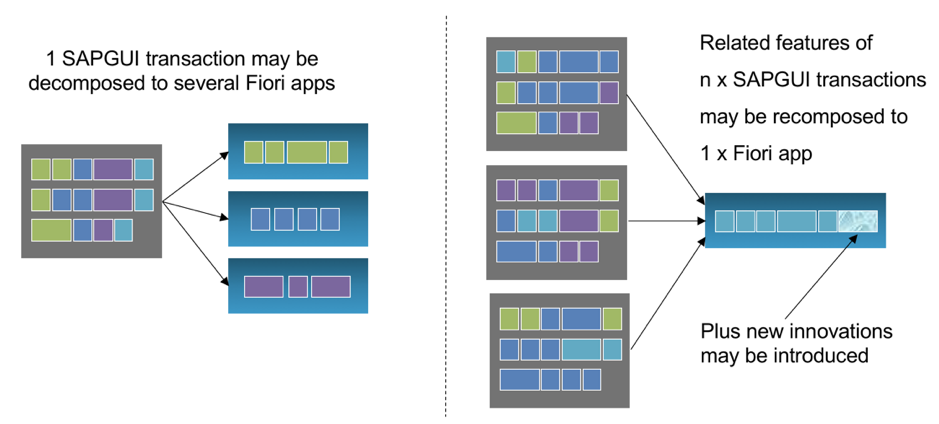
8. Fiori apps should support every feature from the equivalent SAP GUI transactions – False
The design of Fiori has a business role and task focus which goes beyond the universally applicable design for several SAP GUI transactions. This is good, as old SAP GUI features will not end up adding dead weight to the Fiori applications. Also, new digital transformations will lead to considerable differences from previous SAP GUI transactions.
9. Fiori developers from Business Suite or Suite on HANA are ready to develop on SAP S/4HANA – Will require effort
A majority of developers who have worked before on Business Suite on HANA solutions will need more effort to transition to S/4HANA. Since there is a lot of ground to cover in terms of knowledge, it is good to get an early start. Some topics can be learned easily, even on SAP Business Suite before transitioning to S/4HANA.
10. Assuming User Experience is a minor &/or technical part of your SAP S/4HANA project – False
SAP has always insisted on the methodology of people, processes, and technology and how each of them is related to each other. This means that the user component is highly regarded on the same level as technology and business process functionality. This means that you need to seriously consider the planning of how to achieve User experience goals.
Conclusion:
Thus, before adopting the SAP S/4HANA one should have an idea about the related myths so that the transition can be made smoothly from product to product and resources can be properly utilized.
That’s all for today. If you’re interested to read more articles on this topic, feel free to visit ZaranTech Blog.
At ZaranTech, we also offer a Self-paced video learning program for Workday HCM mentored by certified and experienced subject matter experts. Browse through our course pages for further information.
Happy learning!

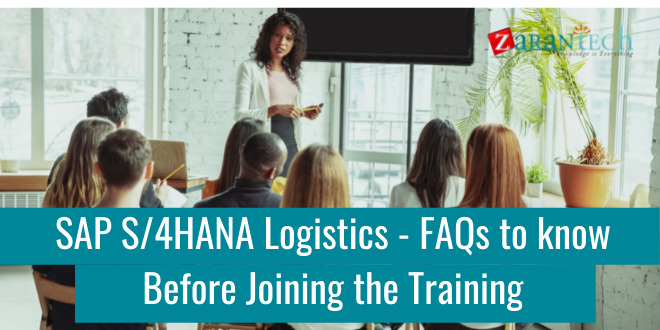

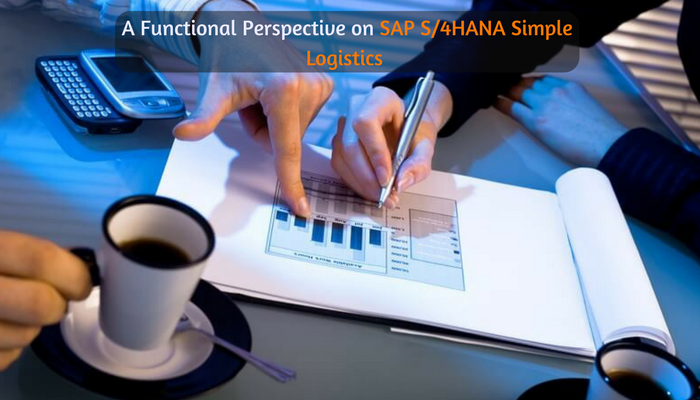
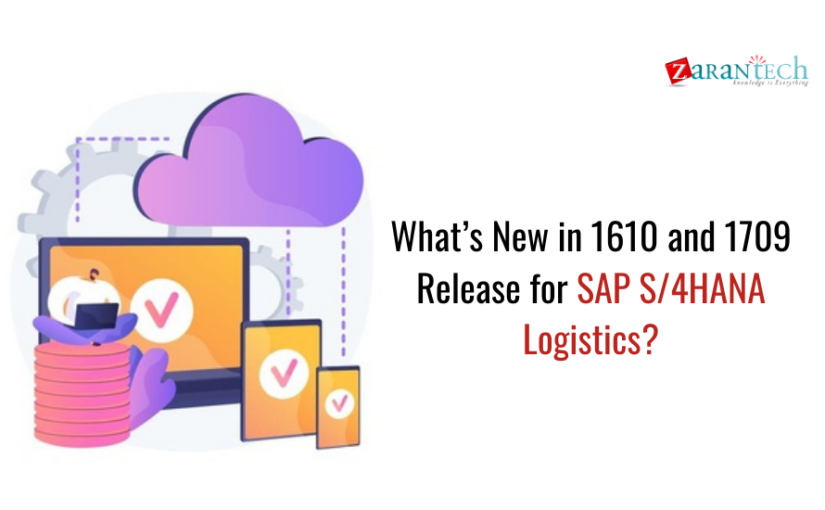
 99999999 (Toll Free)
99999999 (Toll Free)  +91 9999999
+91 9999999